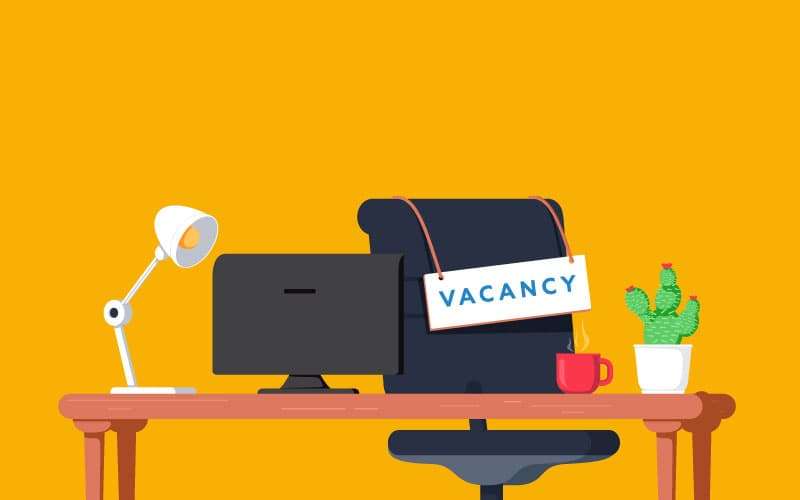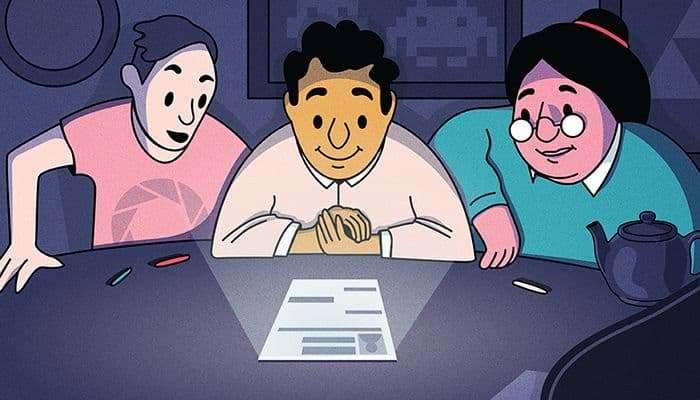
Your top 3D career questions answered by industry veterans.
So, you’re finishing up VFX school and you’re about ready to take on the (CG) world with your newly acquired 3D skills. But before you can do that, there’s still the question of how you’re going to get your foot through that studio door.
We asked industry pros to answer your most asked questions about starting your career off in VFX.
Find more articles like this on AREA by Autodesk, the official 3ds Max and Maya community.
Should I pursue a career in VFX?
What are the best aspects of working in film VFX? Is this the right path for you? Fret not – we talked with industry veterans and rookies alike to answer your burning questions. We polled a wide range of Autodesk users to find out what inspired them to choose film VFX, and what they love best about their line of work. Here are 3 of the most common answers we got:
- Endless potential for creativity
Film VFX is about bringing imagination to life. It’s an ideal environment for people who are artistic, and want to push the boundaries of what is possible. - Potential to work with iconic, prestigious companies
Many of the artists we polled said their dream was to work with a company like Pixar or Industrial Light & Magic. The mere thought of joining those teams fueled their passion for a career in VFX. - The magic of it all
Many of our users remember sitting in movie theatres and being completely captivated by the magic of movies like Star Wars and The Matrix. At that moment, they knew they wanted to be part of that experience—and share it with the world as film VFX artists.
See the full article on AREA, and find more inspiration to pursue a career in film animation: The Top 4 Reasons People Work in Film VFX
What should I be doing in the final year of my 3D program to prepare for my first job?
In your final year of school, there are definitely a few steps you can take to smooth your transition from student to 3D professional. Here are a few recommendations from our community of experts:
- If you haven’t already, do an internship. Many top studios offer internship programs, and it’s an ideal way to make contacts, expand your skills, and get some real-world experience for your resume, demo reel, etc.
- Consider taking some complementary art classes. 3D hiring expert, Pierre-Luc Labbée, says "A lot of hiring managers actually look to see if a 3D artist has done painting, sculpture or photography – any kind of artistic pursuit. That definitely helps you get a job."
- Get working on your resume and demo reel. Don’t leave this to the last minute. It takes time to craft the ultimate representation of your identity, skills, and goals as a 3D artist. Start fine-tuning your CV, and editing your reel, as you approach the graduation finish line.

Should I specialize right out of school, or try out different areas of VFX?
You might be tempted to focus all your energy on a specific aspect of FVX, but the truth is, it can be far more beneficial to try a few different roles.
Being open-minded about what jobs you’ll go after can create opportunities you never imagined. Take Casey Schatz, for example, Head of Visual Production at The Third Floor. Casey started out as a photography major, who dabbled in theater lighting, cinematography, and experimental animation. When his student film showed at the end of the year, he was immediately offered a job at a motion control company—something he’d never considered.
Casey reflected, “I barely knew what previs/techvis was at the time, but soon realized that this is what I was put on this earth to do...I’ve never looked back.”
Pierre-Luc Labbée, founder of RHUM, says new graduates should try a little bit of everything, from assistant and runner positions to supporting the facility team. “Explore and experience a little bit of every piece of the pipeline, and then decide what [you] want to do...I know Oscar-winning VFX Supervisors who started their career this way.”
Get more tips about breaking into the visual effects industry on AREA: Want a Job in VFX? Take Notes From These 5 Pros
If 3D jobs require ‘job experience’, how can I break into the industry? Should I get an internship?
The short answer is a resounding “yes”! Everyone knows that school alone often isn’t enough to land an amazing 3D job. You need some real work experience to build confidence and credibility, as you transition from student to professional.
Here are some of the main advantages of pursuing a 3D internship: Industry contacts
- Mentorship from experienced studio professionals
- Opportunities to work on challenging projects
- Potential to create material for your own demo reel
- First-hand knowledge of how VFX companies function
- Learn new tools and techniques you haven’t encountered at school
Many leading studios offer internship programs. Framestore’s Launchpad program is a good example. Check out this article to meet Amy Smith, Framestore’s Head of Talent and founder of Launchpad. Amy talks about what they look for in interns, and the key benefits of the program: Launching a Career with a 3D Internship
And in this article, you’ll meet an actual Launchpad intern, Keegan McDougall, who shares what he gained from the experience: My 3D Internship at Framestore
Head to AREA by Autodesk for everything 3D.
I already graduated, am I still eligible for an internship?
It will depend on the company, but yes, there are still internship opportunities out there for 3D artists who have already graduated.
Framestore’s Launchpad program is a one example. They have opportunities for students who are still in school, or up to 12 months after graduation. Framestore offers paid internships in several cities, including London, Montreal, New York, and Los Angeles.
The company welcomes applicants from various disciplines, including visual effects, animation, games, design, computer science, photography, and fine art.
Check out Launchpad intern, Keegan McDougall’s experience with the program on AREA: My 3D Internship at Framestore

How can I get my foot in the door at a top VFX studio?
If you’re finishing school, or recently graduated, your next big challenge is to find work at a leading VFX studio. But what kinds of roles can you reasonably expect to land, as a total newbie?
Here are some of your best routes into the visual effects industry:
- Do an internship (such as Launchpad), to get your foot in the door and build experience.
- Apply for any job at the studio, even those unrelated to VFX. Take a lesson from C. Andrew Nelson, Lead Effects Animator at a George Lucas-led gaming studio. His first studio job was in
customer service. - Start out as a Junior. This is a typical entry-level VFX role. You’ll be apprenticed to a particular team or department, and get to work on films right away. This path is ideal for someone who wants to specialize right away, for example, in modelling or compositing.
- Apply for Runner positions. This is one of the easiest ways to break into the VFX industry. You’ll spend months getting coffee and running errands, but the networking opportunities are tremendous. You’ll meet and speak with everyone in the company. If you’re hardworking, there are opportunities to get noticed, and land a job you’ll really love.
Check out this interview with James Stone, the Asset Supervisor for Cinesite, for more great advice on
AREA: Two Quick Ways to Get a Job in VFX

How should I handle "unknowns" at my first 3D job?
No matter how stellar a student you were, or how sharp your skills are, you will run into things you don’t know/understand at your first 3D job. It’s all part of the learning curve.
Here are a few words of advice from industry pros on navigating those early days at work:
Be confident and proactive. Ellen Poon, Producer and VFX Supervisor at Lancet Films, survived her first visual effects gig with a combination of quick thinking and unshakable confidence:
“I walked in there proclaiming that I knew everything, and they believed me (laughs)… [But] I didn’t disappoint. I was really trying very hard to make sure that everything that was asked for was delivered. If I didn’t know how to do it, I would learn how or invent a way really quickly.”
How do I make my 3D resume stand-out?
There’s no doubt about it: the way you present your resume can make or break your 3D job prospects. A resume presents your skills, qualifications, and experience — but it should also reflect your personality, vision, and uniqueness as an applicant. That’s a lot to squeeze into a one-page document!
What’s the best way to approach this process? Pierre-Luc Labbée, founder of Rhum (a company that matches talented people with creative tech companies) lays out the following four pillars of resume- writing for 3D artists:
- Research the company and the position. Find out what they’re known for, and the specific requirements for the job. Are they big, small, looking for a generalist, a specialist? You need this information to figure out which skills and experience to highlight—and frame yourself as the best candidate for the role.
- Don’t use templates. You’ll never impress a hiring manager or recruiter with a templated resume you found online. Use your own words. Explain why you want the job, and what makes you a great fit for the company. Be authentic, and get straight to the point.
- Keep it clean. Don’t clutter your resume with decorative fonts, colours, and other distractions. Make it neat, well-organized, and easy to read at a glance. One page is best; two pages, maximum. Use a good resume building software to ensure your final product is clean and professional.
- Include your related interests. 3D artists often underestimate the value of listing their interests and passions. If you love things like gaming, drawing, photography, or sculpture, be sure to mention it. Many hiring managers look to see if 3D artists have complementary artistic talents. This can be a factor in deciding who gets the job.
Check out our full interview with Pierre-Luc Labbée to see the rest of his resume-building tips, and more advice for launching your 3D career on AREA: 8 Killer Resume Writing Tips to Land that 3D Job
Head to AREA by Autodesk for everything 3D.
What do VFX recruiters look for in their employees?
Think killer software skills are all you’ll need to get hired at a VFX studio? Think again!
We surveyed 20 VFX recruiters at Effects Montreal 2018 - an international conference for VFX and animation. We asked them one simple question: “What’s the most important quality you look for in a job candidate?”
The results were not at all what you might think. “Attitude” outranked every other characteristic, including software mastery. In fact, adaptability, passion, and creativity were more important than technical skills, across the board.
The clear takeaway here? Recruiters are looking at candidates holistically. Technical skill is pretty much a given at this level—your competitors will all have similar software knowledge.
At the end of the day, it’s your passion, positivity, and willingness to learn that will set you apart as a top candidate for VFX jobs. These are attributes you’ll want to highlight on your resume, cover letter, and in interviews.
What should be included in my VFX demo reel?
What do animation recruiters look for when reviewing demo reels? Who better to ask than Bardel Entertainment, the Canadian animation studio who makes series for Nickelodeon, Disney, Cartoon Network, DreamWorks, and Warner Brothers.
Here’s Bardel’s advice for putting together a professional demo reel that will impress recruiters:
- Only include your most amazing content. Think of your reel as your “greatest hits” and don’t add anything you’re not totally proud of.
- Think about what type of animation you really want to pursue, and put those examples front and centre on your reel. This is your chance to show recruiters who you are, what you’re passionate about, and what makes you unique.
- Always include a title card with your name and contact information at the beginning of your reel.
- Even tiny details matter, so make sure your formatting is consistent throughout (if one title is bold, ensure they’re all bold, etc.)
- Aim for about 2 minutes in length. Show you respect the studio’s time, and know how to effectively edit your work.
- Double check for errors, and make sure your reel link works (this should go without saying, but you’d be surprised how many typos and broken links recruiters see).
To check out a professional demo reel, and more of Bardel’s expert tips, take a look at this article: Reel Tips for 3D Artists.
What should I include in my storyboard portfolio?
What do recruiters at leading studios look for when reviewing storyboard portfolios? Great question. We asked the Emmy-winning team at Bardel Entertainment to describe the elements of a top-notch portfolio. Here’s what they told us:
- Tell a compelling story. In fact, we recommend using animatics to show two or three different stories, utilizing different storytelling techniques.
- Create depth by laying down a grid, and placing elements in the foreground, mid-ground, and background. Your storyboard should really “sell” depth.
- Draw all the elements in a scene: BG, characters, and props. Make it come alive with acting performance, strong expressions, and convincing poses.
- Integrate filmmaking technique into your storyboards. Show us how you’ll use camera, image composition, and staging for clarity.
- Inject emotion, action, and atmosphere into your work. Use lighting effects and subtle camera movements to enhance the experience.
It’s worth checking out the rest of Bardel’s storyboard tips and examples here: Reel Tips for 3D Artists: Making the Best Storyboard Portfolio
Find a mentor; build relationships. Look for more experienced professionals at the company who you can connect with and learn from. Also, invest some time and energy in building relationships with your colleagues, so you can integrate with the team, and feel more comfortable asking for help.
Go to AREA to get more advice from VFX veterans, on how to settle into your first job: Want a Job in VFX: Take Notes From These 5 Pros
Want to learn more about the industry? Find interviews, breakdowns,
tutorials, downloads and so much more on AREA by Autodesk, the
official 3ds Max and Maya community.
